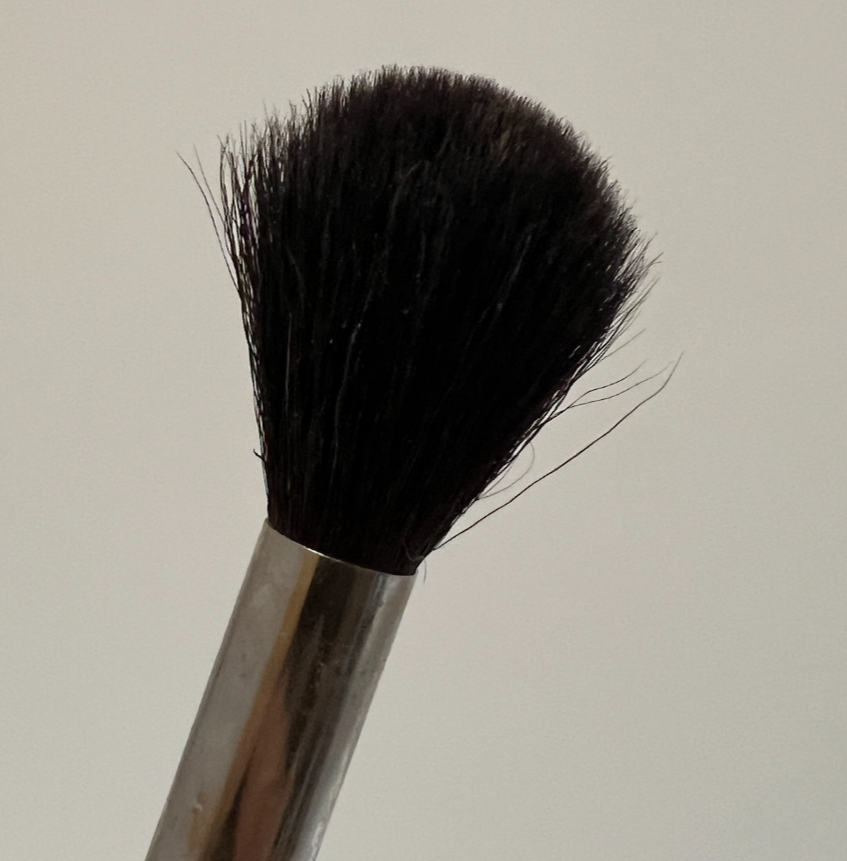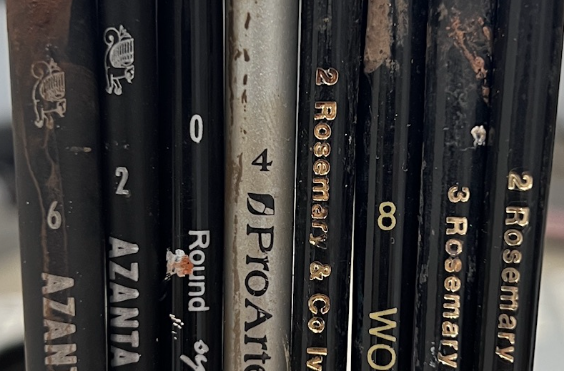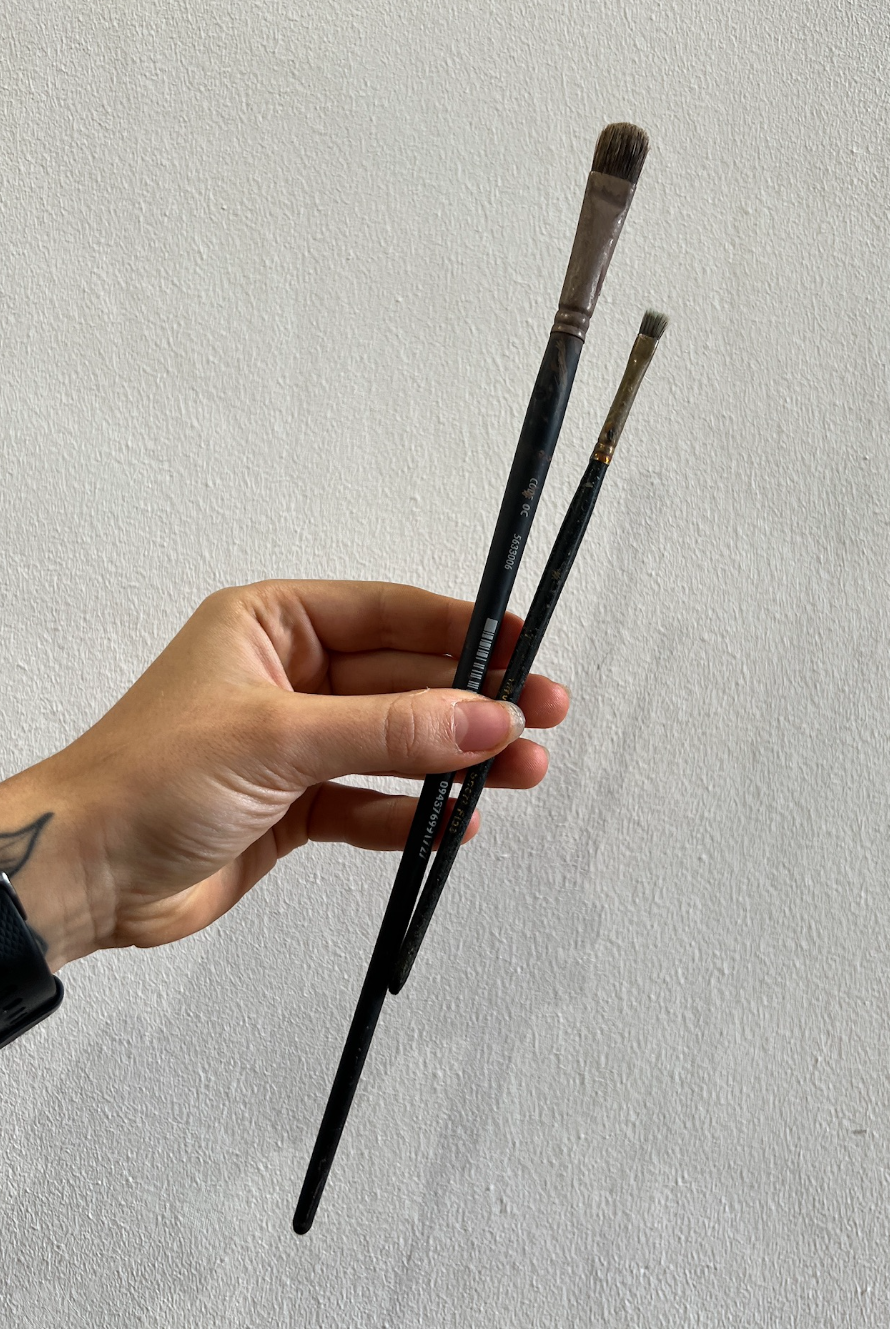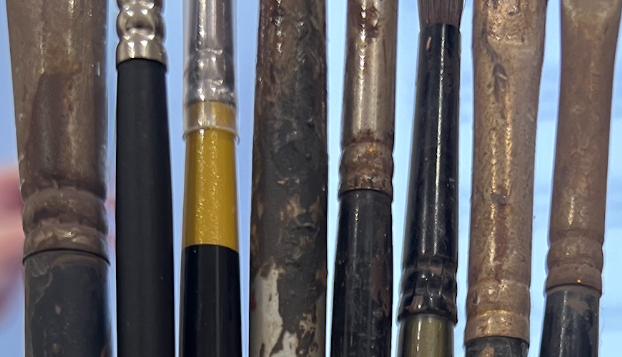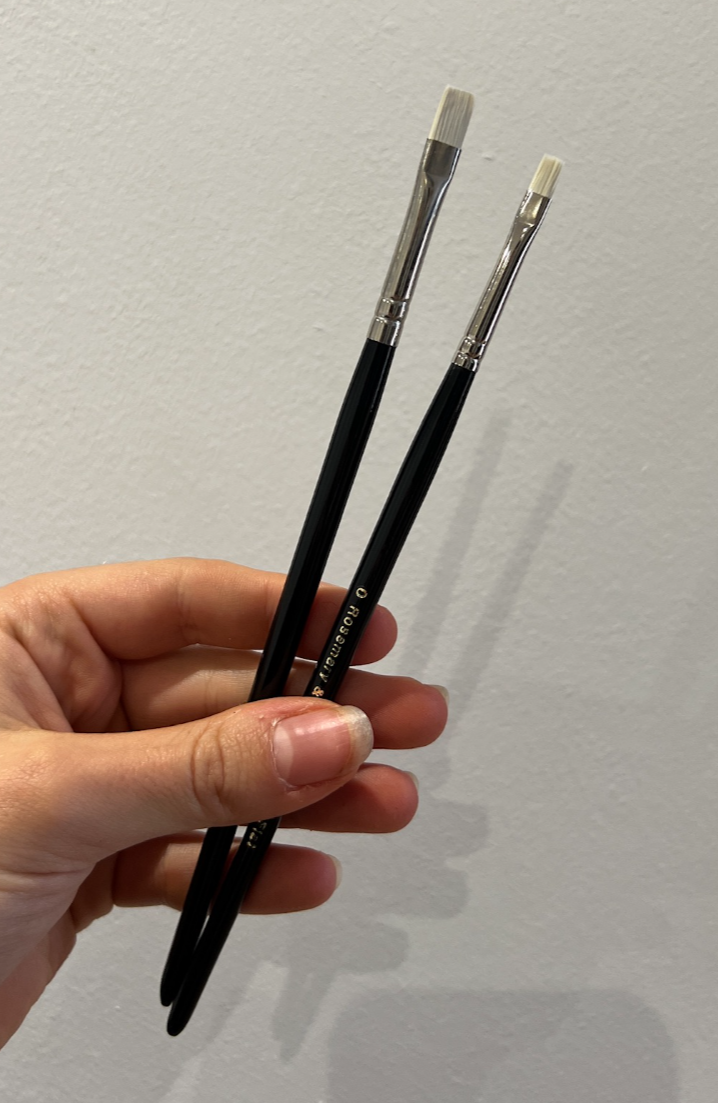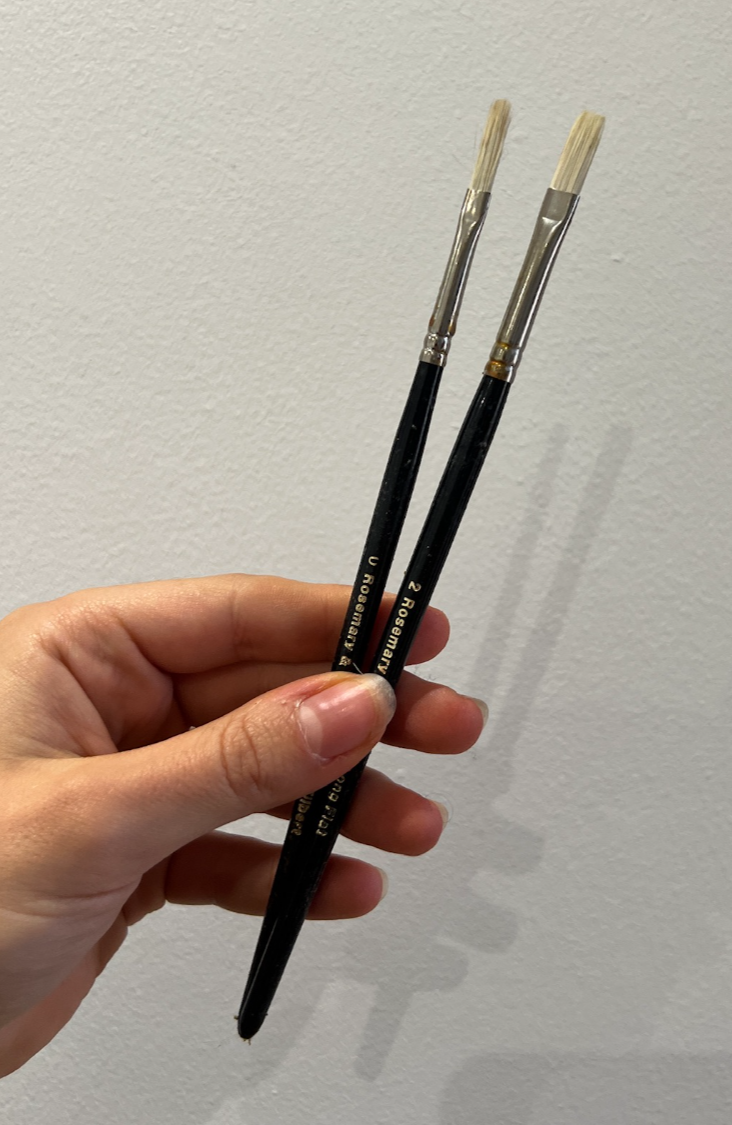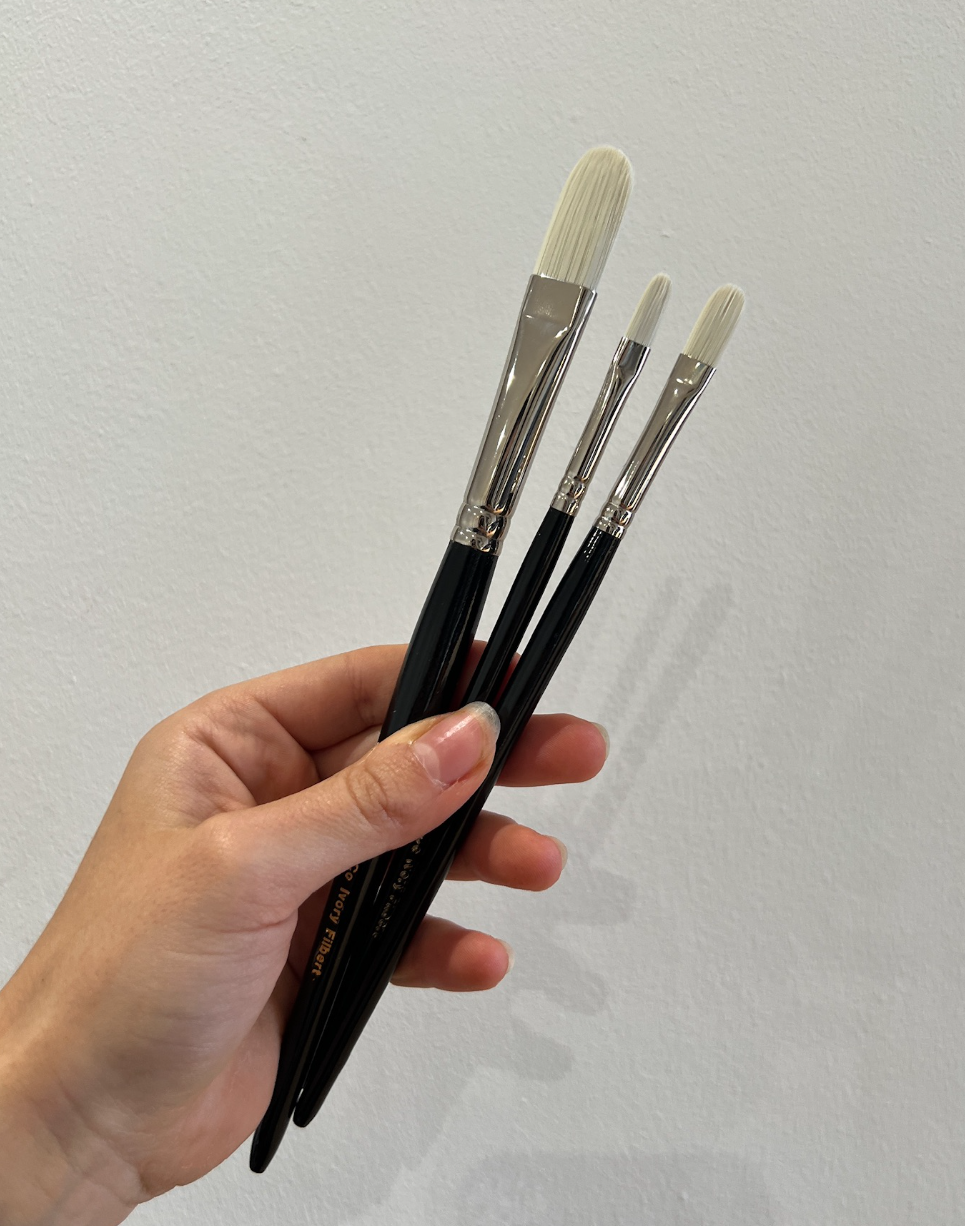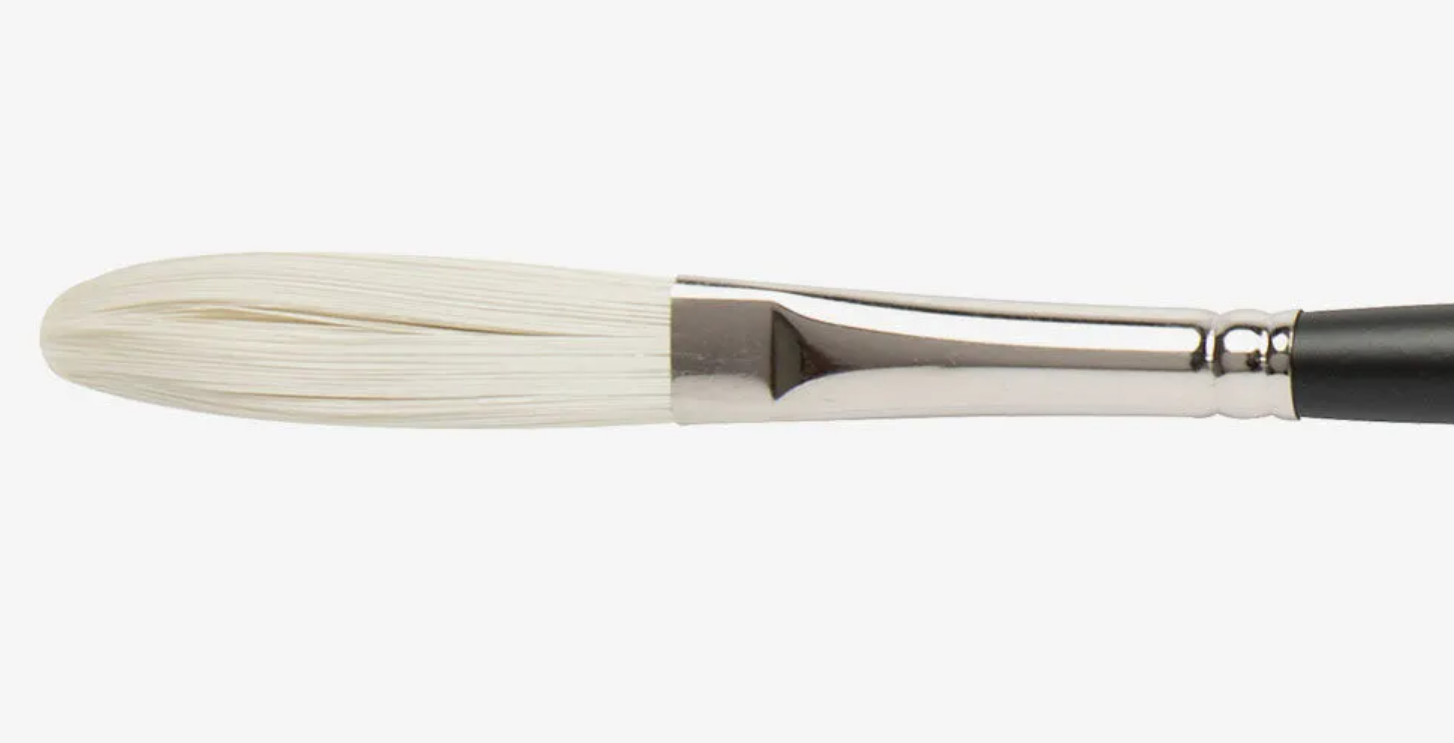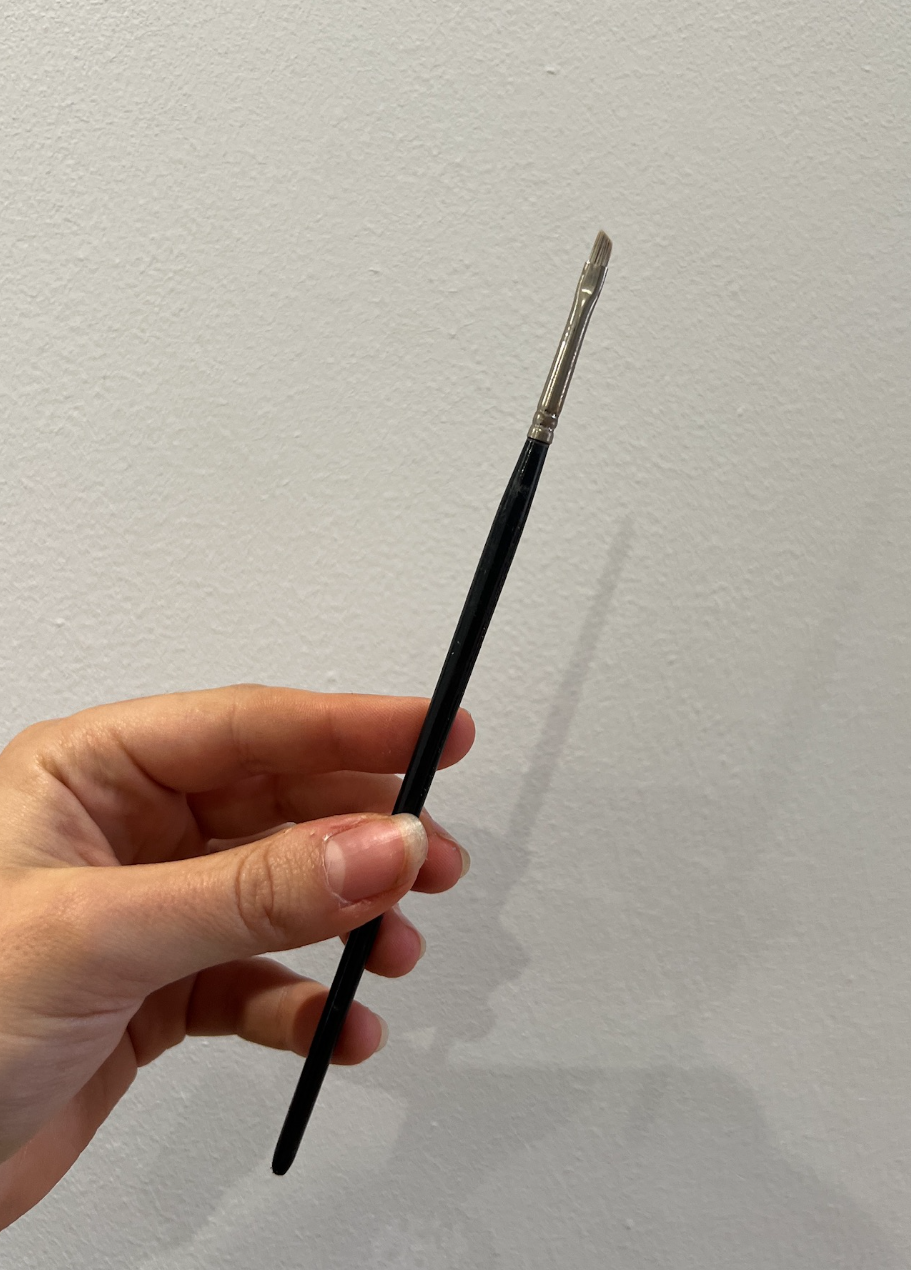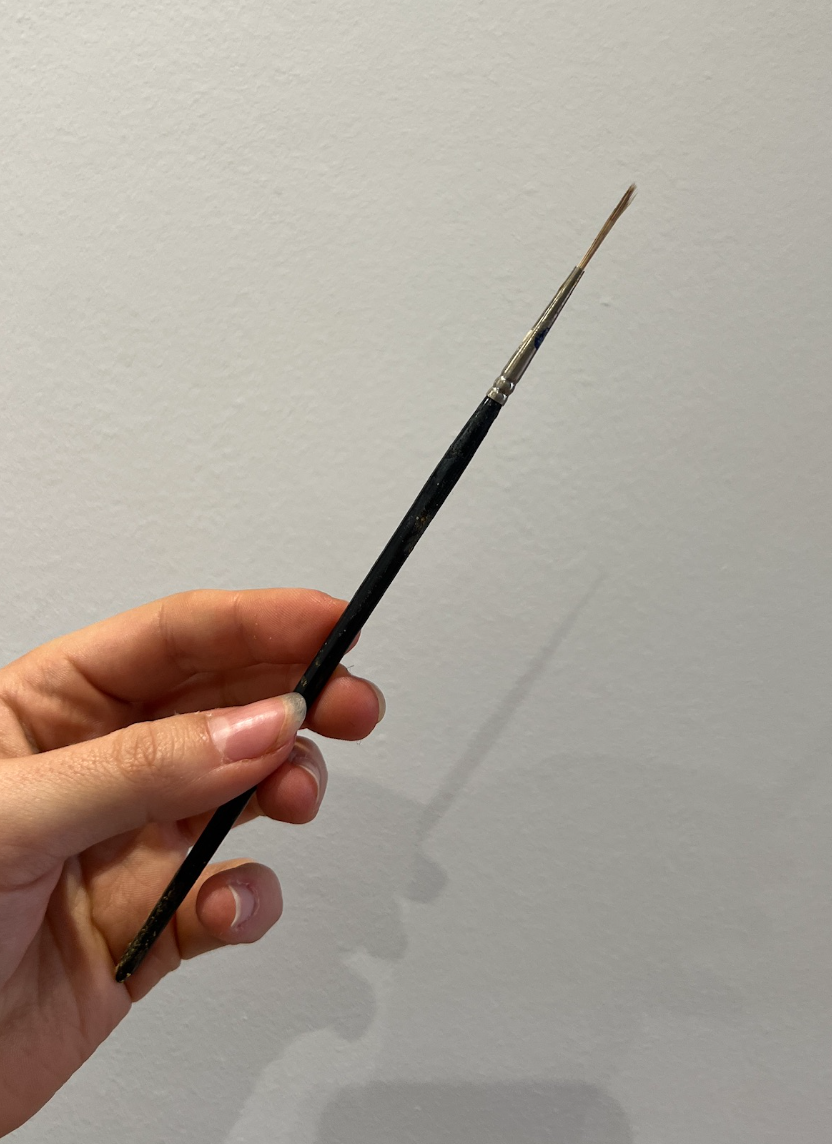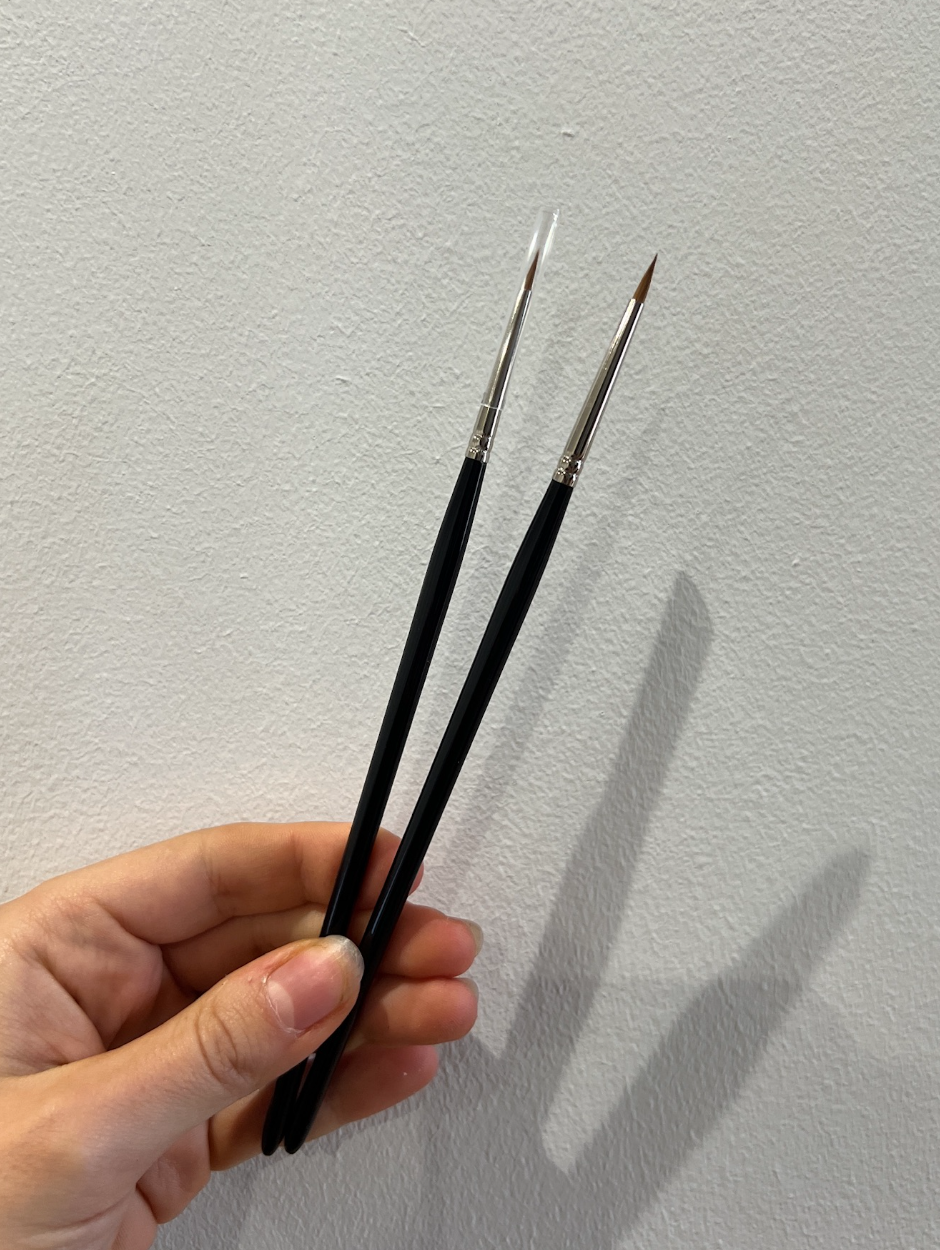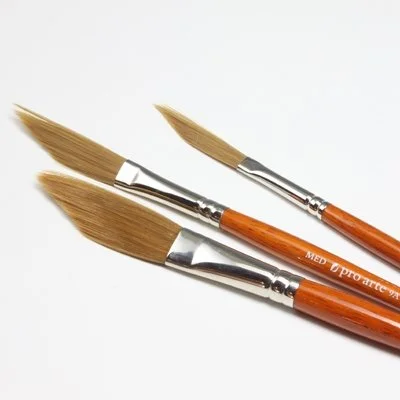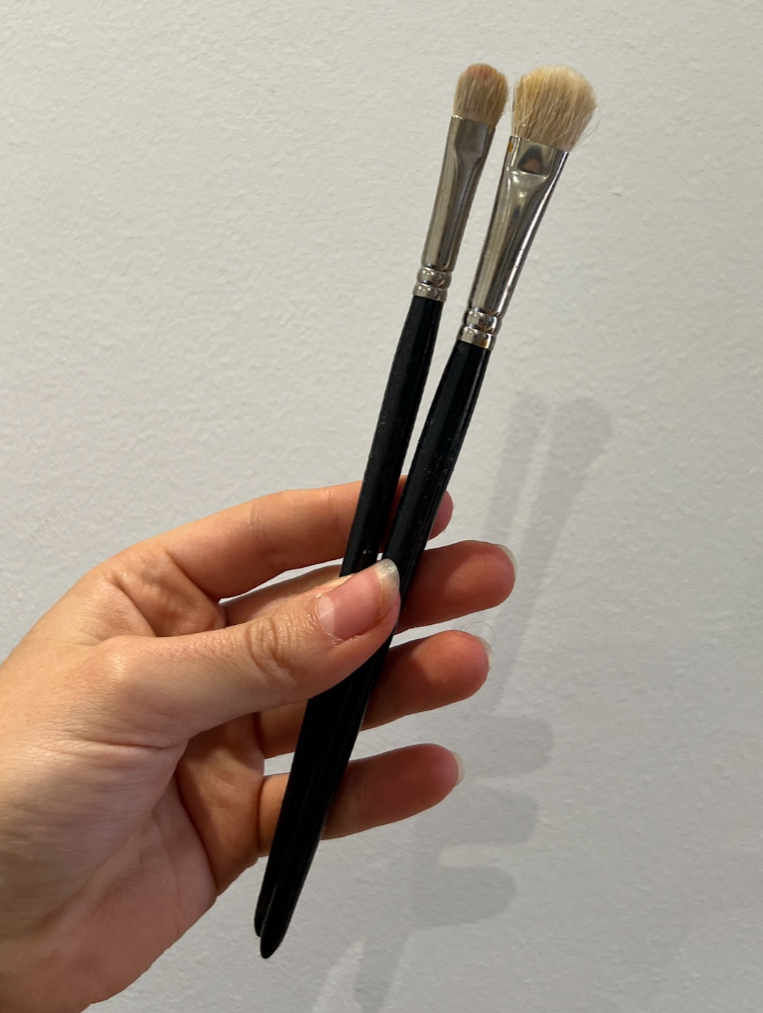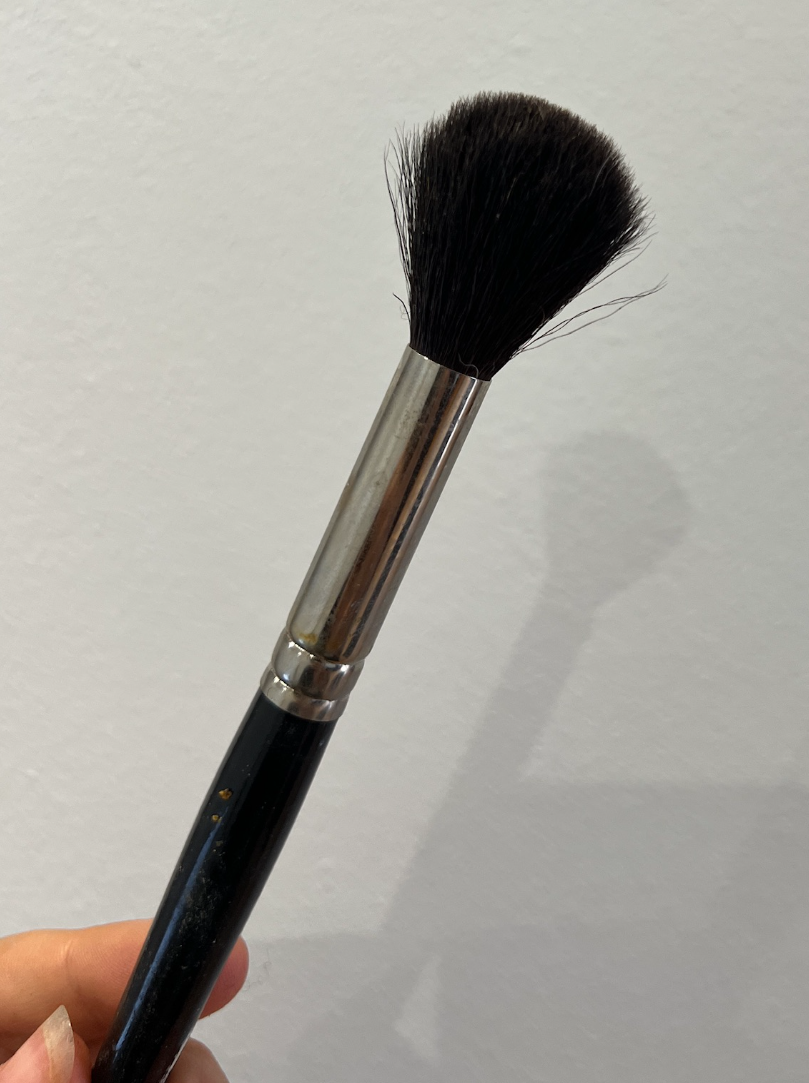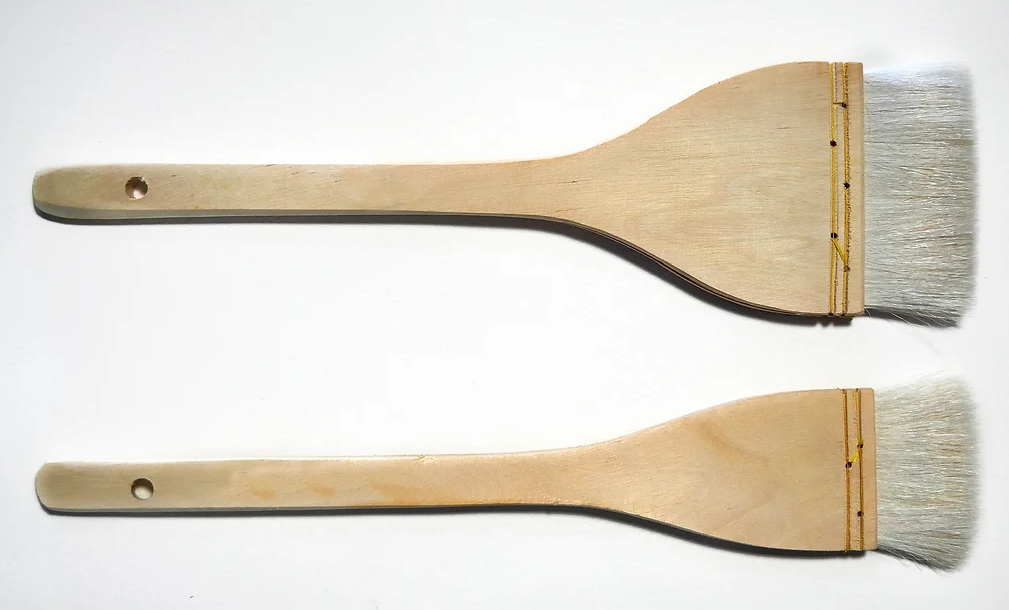A Beginner’s Guide to Oil Paint Brushes
The sheer variety of oil paint brushes can be daunting at first, especially if you’re new to the medium. With so many shapes, sizes, and bristle types, it’s easy to feel overwhelmed by the choices. However, focusing specifically on oil paint brushes—something I am most familiar with—can demystify the selection process and help you find the right tools for your artistic journey. Understanding the unique qualities of each brush type will open up a world of creative possibilities and enhance your painting experience. This guide breaks down the essential brush types—hog, goat, badger, sable, synthetic, and blended—as well as their different shapes, empowering you to express your vision on canvas with confidence.
Bristles
The bristles form the tip of the brush and are the part responsible for transferring paint onto the canvas or substrate. Oil painting brushes come in various types of bristle materials, each suited for different techniques and finishes. Here’s an overview of common types of oil paint bristles and their characteristics:
Hog
Natural hog hair brushes are a popular choice for oil painting because of their durability and paint-holding ability. Each hog bristle has "flags," which are small split ends that increase the brush’s capacity to hold paint, allowing for smoother, more even application. High-quality hog brushes feature dense, stiff hair with many flags, ensuring that they hold their shape well and last longer. When selecting hog bristles, check for natural, unbleached shades. Bleaching weakens the bristle, making it more prone to breakage.
Goat
Goat hair is softer and more flexible than hog, which makes it an excellent option for blending and smoothing out painted areas. Goat hair brushes can apply fine layers, making them suitable for glazing and adding delicate tonal variations. While they may wear out more quickly than hog hair, goat brushes provide a softer application.
Badger
Badger hair brushes are particularly valued for wet-on-wet techniques, or alla prima painting, where layers of paint are applied over each other while still wet. Badger hair combines responsiveness with a velvet-like softness, making it ideal for tonal work and adding highlights. These brushes are durable and perform well over time, wearing down without losing functionality.
Sable
Sable brushes are known for their precision and flexibility, which allows for highly controlled brushstrokes. Red sable brushes are especially valued for detail work, such as spotting or inpainting, which makes them a top choice in conservation (as i have now found out!). Sables are also excellent for blocking in larger areas in oil painting due to their fluidity and ease of movement. While sable brushes can be costly, their performance in detailed work often justifies the investment.
Synthetic
Synthetic brushes are versatile, durable, and often easier to clean than natural hair brushes. They offer an affordable, allergy-free, and more sustainable alternative to animal hair brushes, though they lack the flags seen in hog bristles. With a wide range of grades and qualities, synthetic brushes can be selected according to the artist’s specific needs. Many synthetic brushes now closely mimic the qualities of natural hair, making them suitable for both beginners and professionals.
I am personally a huge fan of Rosemary & Co’s Ivory Synthetic Range.
Blended
Blended brushes, typically combining bristle with synthetic fibers, offer the benefits of both materials. A common blend is 90% bristle and 10% synthetic, which allows the brush to maintain shape over time while being easier to clean and more resistant to wear than natural bristle alone. These brushes retain the resilience of bristle while enhancing durability and are particularly popular among traditional oil painters seeking longevity and ease of use.
Size
Oil paint brushes come in various sizes, often labeled numerically, but these numbers can differ by brand. For consistency, it is better to look at the brush width in centimeters or inches. Smaller sizes are often denoted as 0, 00, or 000 (or written as 2/0, 3/0, etc.). Larger numbers represent progressively larger brushes, with choices depending on the scale of the work and the level of detail required.
Handle
The handle of an oil painting brush is typically longer than those used for other media, which allows the painter to maintain distance from the canvas. This longer handle is essential for gaining perspective on large works. Shorter handles may be preferred for easier transport or for working close-up on smaller canvases. Handle length is thus a matter of preference but affects the painter’s posture and control.
Ferrule
The ferrule is the metal band that attaches the bristles to the handle, ensuring stability and preventing bristles from shedding. Made from materials such as stainless steel, brass, or nickel, ferrules are often crimped for added strength. In higher-quality brushes, the ferrule is rust-resistant, adding to the brush’s longevity.
Brush Shapes
Oil painting brushes are available in various shapes, each suited for specific techniques:
Round/Pointed Rounds
Description: Round brushes have a cylindrical ferrule and a rounded tip. The bristles form a point, making them suitable for precise strokes.
Uses: Detail work, fine lines, and controlled strokes; also good for sketching out compositions or adding highlights.
Technique: Rounds can be used to create thin lines with the tip or broader strokes by pressing down. The amount of pressure affects the line thickness, offering versatility in line work and detail.
Flats (Short & Long)
Description: Flat brushes have a squared-off end with long, rectangular ferrules and bristles that are uniformly cut across the top.
Uses: Ideal for covering large areas, creating smooth, bold strokes, and defining sharp edges. Short flats, also known as brights, offer more control, while long flats allow for looser, fluid strokes.
Technique: Flats can apply thick, even layers or be tilted for thin, sharp lines. Their flat shape is also useful for creating angular shapes or hard edges within a painting.
Bright
Winsor & Newton Monarch Bright Brush
Description: A variant of the flat brush, brights have shorter bristles that provide greater control and stiffness.
Uses: Ideal for applying thick, controlled strokes and working with heavier, more textured paint. Useful for sharp edges and defined shapes.
Technique: Brights allow for quick, precise strokes, especially effective when applying heavy, textural paint. Their shorter bristles keep the brush from bending too much, allowing the artist to exert more control over their marks.
Filbert
Description: Filberts are flat brushes with bristles that curve toward an oval or “cat’s tongue” shape at the tip. They blend the qualities of round and flat brushes.
Uses: Versatile for blending, creating soft edges, and smoothing transitions between colours. Good for more natural, organic shapes, such as foliage and skin tones.
Technique: The shape of the filbert allows it to make both broad and narrow marks, making it suitable for blocking in forms or adding subtle transitions. It can also be used on its side to create thin lines or rotated for broader marks.
Egberts
Jackson's : Akoya : White Synthetic Bristle Hair Brush : Egbert : No.6
Description: Similar to the filbert but with longer bristles, allowing for added flexibility and expressive marks.
Uses: Ideal for loose, expressive brushstrokes and creating textures in oil painting.
Technique: Egberts excel when used for bold, sweeping strokes. Their flexibility makes them perfect for soft blending and layering, especially in more dynamic, impressionistic styles.
Fan
Jackson's : Short Handle Badger Fan Brush : Large
Description: Fan brushes have bristles spread out in a fan shape, making them suitable for creating textures and soft edges.
Uses: Commonly used for blending, smoothing edges, and adding textures such as grass, leaves, or hair. Also helpful in creating clouds and other atmospheric effects.
Technique: By lightly dragging the brush over the surface, the fan can create delicate textures without disrupting the underlying paint layer. For thicker paint, a fan brush can add textured effects by dabbing or stippling.
Angled/Side Loader
Description: Angled brushes have a slanted edge that allows for both broad strokes and precise lines.
Uses: Useful for creating sharp lines and edges, filling in tight spaces, and painting corners. Can be rotated for both fine lines and broader strokes.
Technique: The angled shape makes it easy to create crisp, clean lines by dragging the edge, or broader strokes by using the flat of the brush. The side loader is especially helpful for outlining or shading around complex shapes.
Rigger
Description: Rigger brushes, or script liners, have long, thin bristles that can hold a considerable amount of paint, allowing for continuous, flowing lines.
Uses: Ideal for fine lines, lettering, and detailing work such as branches, grass, and whiskers.
Technique: Riggers can create long, consistent lines without the need for frequent reloading. To achieve fine lines, load the brush with thinned paint and use a light touch.
Spotter
Description: A smaller version of the round brush, with a very short handle and fine bristles. (Commonly used for in-painting in conservation)
Uses: Precision detail work, often used for creating tiny highlights or intricate details.
Technique: The short bristles provide precise control, making it perfect for areas that require fine detail, such as highlights in eyes or small texture in leaves.
Liner/Swordliner
Pro Arte Series 9A Prolene Sword Liner Brush
Description: Liners have long, thin bristles, and swordliners have a unique angled tip that allows for versatility in mark-making.
Uses: Perfect for outlining, fine line work, and expressive strokes, especially in landscape and portrait work.
Technique: By changing the pressure or twisting the brush, artists can shift between thin lines and broad strokes, making this a highly versatile brush for expressive, gestural work.
Mundy Mops
Description: A densely packed brush with a rounded or domed tip, often made of soft bristles.
Uses: Useful for blending, smoothing out transitions, and creating a soft finish. Great for subtle gradations and atmospheric effects.
Technique: The dense, domed bristles can be used to blend and soften paint layers. Lightly dabbing or swirling can create smooth, seamless transitions without visible brush marks.
Domed
Description: Similar to the mop brush but firmer, with a rounded top that provides a smooth application. (The brush in the image isnt a firm verison of this brush - more used for blending but i didnt have one to hand!)
Uses: Perfect for blending, layering, and glazing in oil painting.
Technique: The rounded bristles allow for soft application, which is ideal for achieving a polished, smooth look. Swirling the brush can create a velvety effect.
Smooshing
Description: Firmly packed, flexible brush designed for applying thick paint layers with control.
Uses: Blending, softening edges, and applying smooth, dense strokes. Often used as a smudger or blender across mediums.
Technique: The dense bristles allow for “smooshing” or pushing paint without disturbing the underlying layer, making it effective for final touches or corrections.
Hake
Hake Brush, Image from John Lovett.
Description: A wide, flat brush traditionally made of soft, natural fibers, typically goat hair.
Uses: Excellent for large washes, backgrounds, and smooth blending in oil painting.
Technique: Hake brushes hold a large amount of paint or glaze, allowing for broad, smooth applications. Their wide shape makes them ideal for covering large areas, while their softness allows for minimal brush marks.
This detailed knowledge of brush shapes helps artists choose the right tool for each stage of a painting, allowing for a variety of techniques, textures, and effects. Different brush shapes offer control, texture, or smoothness, enabling artists to develop unique painting styles.
I hope this article is useful - if you wish to recieve any recommendations for brushes, or just want to share what your favorites are, comment down below!


